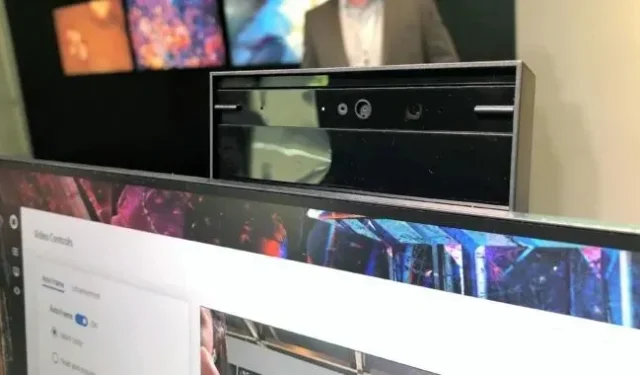A USB-C monitor is a good way to minimize the amount of cables you need for your setup. And if this setup is for work where webcams have become almost mandatory, a monitor with a built-in camera eliminates the need for an extra cable. The HP Z24m G3 I tested this week seems to be a decent option for workers who don’t need the highest resolution panel, either because they’re content with fewer pixels or using a multi-monitor setup.
At 2560×1440, the 23.8-inch monitor still has a good pixel density of 123 ppi. USB-C, with its current maximum output of 100W, makes it suitable for thin and light Windows-based laptops and MacBooks that can charge through the port.
I didn’t get a chance to review the Z24m’s image quality, but HP said the IPS panel is for professional content creators. It should have enough color gamut to work with Windows and the web, and serve Mac users with 99% sRGB and 90% DCI-P3 color gamut. Any errors should be invisible to the naked eye as the company claims the panel has a Delta E <2.
The display also supports HDR, but only with an average contrast ratio of 1000:1 and a maximum brightness of 400 nits. We don’t expect HDR content to be noticeably different from SDR content here. The HP Z24m is also slightly faster than a typical productivity monitor as it has a 90Hz refresh rate and a 5ms gray-to-gray response time with acceleration.
Above the Z24m’s panel is a non-removable 5-megapixel webcam. It has an infrared sensor, so you can use it to sign in to a connected computer using Windows Hello facial recognition. There’s also a proximity sensor so it can detect if you’re nearby and automatically lock or wake up a connected PC if it’s using Windows 11.
The big black camera box is chunky, but the camera can tilt in the holster and you can press the whole box against the monitor when not in use.
But when the camera is on, everyone is looking at you. When I saw the Z24m, its camera captured my image and followed me as I stood a few feet from the monitor and moved from side to side. The camera even managed to keep me in frame with someone else in the frame. An HP spokesperson said the settings could be changed to make the camera run faster. I was in a moderately lit room and my skin and hair colors looked pretty accurate.
The monitor software allows you to crop the image and adjust brightness and exposure levels using sliders.
The display is meant to complement the conferencing kit with a pair of noise-canceling microphones and built-in speakers from under the bottom bezel. You can’t see them when looking at the monitor head-on, but there are two 5W speakers “with 82dB and 200Hz bass,”HP says in a shared filing.
Multiple monitor settings
The lack of speakers in plain sight has allowed HP to use thin bezels on all four sides of the display, making a multi-monitor setup more seamless. At CES in January, HP announced two more Z-series monitors. These ultra wide-angle models, the Z40c (39.7-inch, 5120×2160 resolution) and Z34c (34-inch, 3440×1440 resolution) also have built-in 5-megapixel cameras. With the Z24m, HP is targeting content creators who may not want a curved ultra-wide screen and prefer to display content on separate screens or flat panels.
HP showed the Z24m as part of a dual-monitor setup alongside the Z24q, which it also announced today. The Z24q is essentially the same monitor as the Z24m but without the webcam.
HP noted that the Z24m works in daisy chain, and DisplayPort 1.4 supports up to three QHD monitors. The monitor also has HDMI 2.0 as well as four USB-A and RJ45 ports. Its software includes a feature to help split screens.
With lower resolutions, thinner bezels and a less extreme camera, the Z24m should be a more affordable alternative to 4K USB-C monitors with built-in webcams, like the upcoming Dell UltraSharp U3223QZ, a 32-inch 4K screen with a built-in 4K webcam. in its thick top frame.
HP hasn’t named a price for the Z24m, but it’s due in July. I expect it to cost more than the $374 Z24q G3 coming out in May, but it should be noticeably cheaper than the $950 Z34c.


